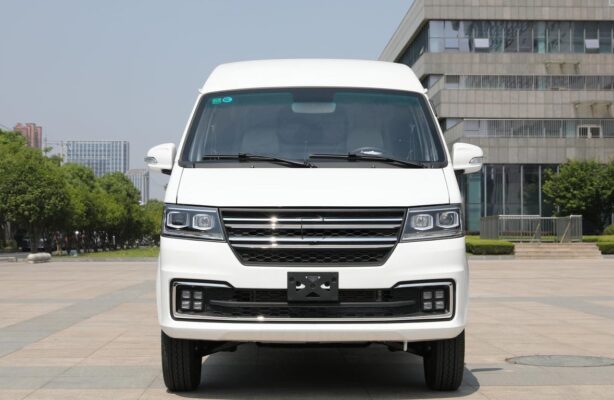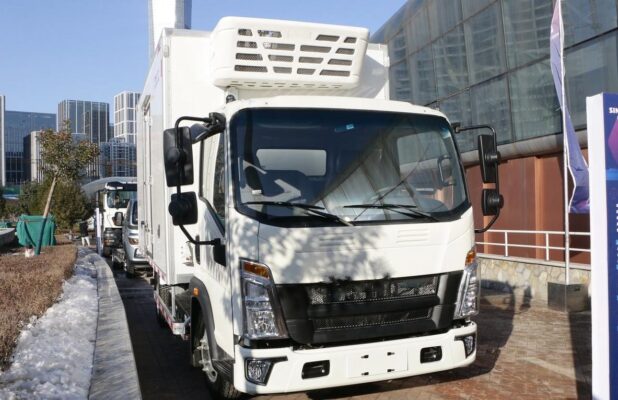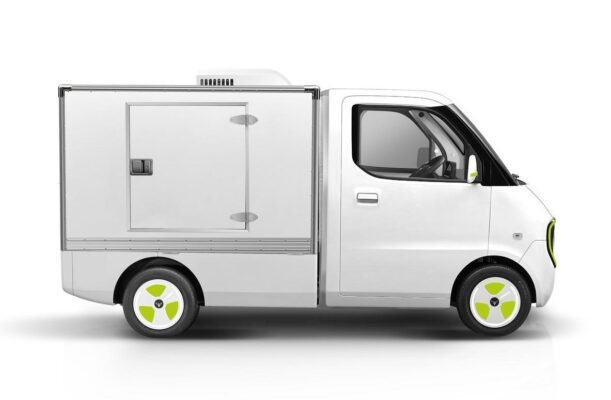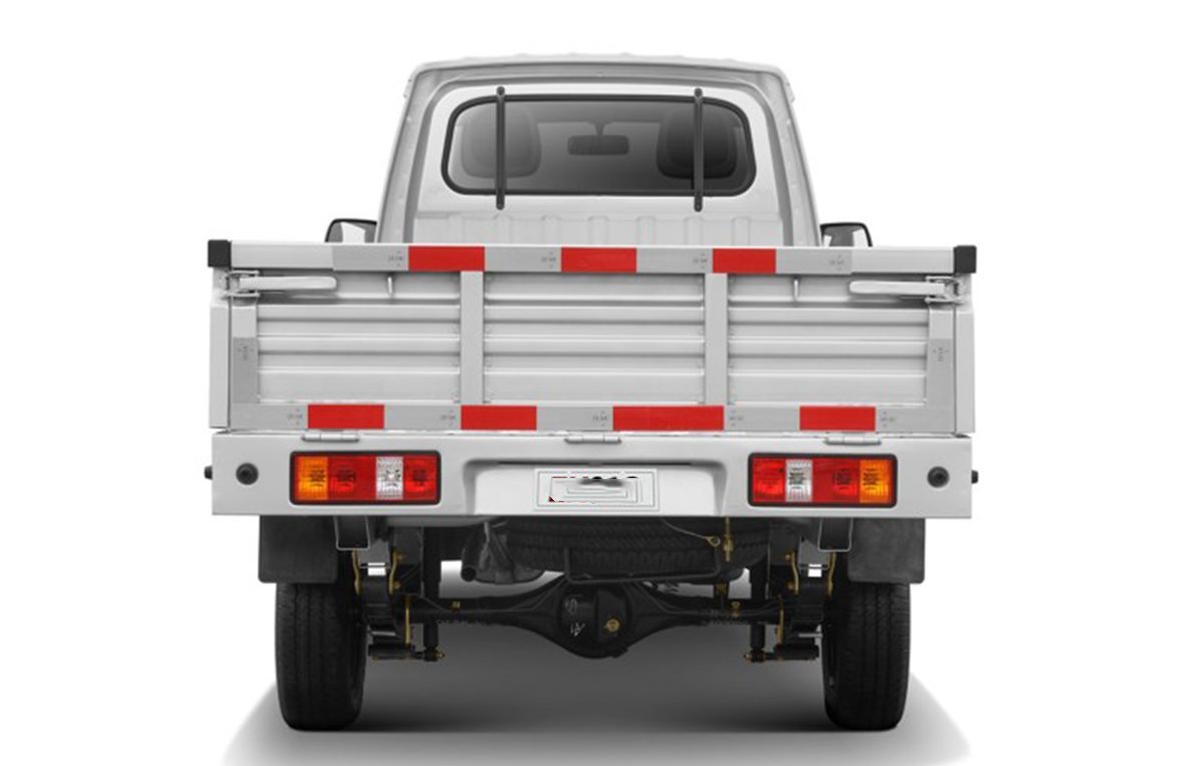Berita Lori Elektrik
What are the common ways to classify electric vehicles?
Dihantar pada oleh Lori Elektrik
Kenderaan elektriks are a diverse and rapidly evolving category of vehicles, and they can be classified in several ways. Understanding these classification methods is crucial for both consumers and industry professionals as it helps in comprehending the different types of kenderaan elektriks available, their capabilities, and their suitability for various applications.

Kenderaan elektriks can be classified according to different classification criteria. One common classification method is based on the battery capacity. Another common classification method is according to the usage range and charging method of kenderaan elektriks. They can also be classified according to the power system and vehicle model. The following will explain these classification methods in detail.

1. According to the battery capacity, what types can electric vehicles be divided into?
According to the battery capacity, kenderaan elektriks can be divided into battery – only kenderaan elektriks (BEV), plug – dalam hibrid kenderaan elektriks (PHEV), and range – extended kenderaan elektriks (REEV).
A battery – only kenderaan elektrik (BEV) refers to a vehicle that completely depends on battery power supply and does not use a fuel engine. BEVs are designed with a relatively large – capacity battery pack to store enough electrical energy for the vehicle’s operation. These vehicles are becoming increasingly popular due to their zero – emission nature. They are ideal for short – ke – medium – range commuting and local travel. Walau bagaimanapun, their range is often limited by the battery capacity, and they require regular charging. The development of battery technology is constantly aiming to increase the energy density of batteries in BEVs, which would further extend their range and make them more practical for a wider range of travel needs.

A plug – dalam hibrid kenderaan elektrik (PHEV) is a vehicle that can be driven either by the battery or by the fuel engine and can be switched according to requirements. PHEVs combine the benefits of both electric and internal combustion engine (ICE) technologies. They are equipped with a battery pack that can be charged from an external power source, such as a home charger or a public charging station. When the battery has sufficient charge, the vehicle can operate in electric – only mode, which is ideal for short trips within the city where emissions need to be minimized. For longer trips or when the battery charge is depleted, the vehicle can switch to the fuel engine, providing the necessary power without the range anxiety associated with pure BEVs. This flexibility makes PHEVs a popular choice for consumers who may have both urban and long – distance travel needs.
A range – extended kenderaan elektrik (REEV) is a vehicle in which the fuel engine provides power to the electric motor when the battery power is below a certain threshold. REEVs are similar to PHEVs in some ways, but they operate with a different power management system. In a REEV, the electric motor is the primary source of propulsion, and the fuel engine is mainly used to generate electricity to recharge the battery or directly power the motor when needed. This design allows for a more seamless transition between electric and engine – powered driving, providing a consistent driving experience while still reducing overall emissions compared to traditional ICE vehicles. REEVs are often considered a good compromise between BEVs and traditional hybrid vehicles, offering extended range capabilities without sacrificing the environmental benefits of electric driving.

2. How to classify electric vehicles according to the usage range and charging method?
According to the usage range and charging method, kenderaan elektriks can be divided into urban kenderaan elektriks and highway kenderaan elektriks.
Urban kenderaan elektriks are mainly used for urban travel, generally equipped with a smaller – capacity battery, and are charged through home charging piles. Urban kenderaan elektriks are designed to meet the specific needs of city driving. Their smaller – capacity batteries are sufficient for short – distance trips within the city, such as commuting to work, running errands, or short trips around town. Home charging piles are a convenient option for these vehicles, as they can be charged overnight or during periods when the vehicle is not in use. This makes urban kenderaan elektriks a practical choice for city dwellers who have access to a reliable home charging infrastructure. They are also often more compact in size, which is advantageous for navigating through narrow city streets and finding parking in crowded urban areas.
Highway kenderaan elektriks are suitable for long – perjalanan jarak jauh, generally equipped with a larger – capacity battery, and can be charged using public charging piles. Highway kenderaan elektriks are engineered to overcome the range limitations that can be a challenge for kenderaan elektriks on longer trips. Their larger – capacity batteries allow them to travel longer distances between charges. Public charging piles play a crucial role in enabling long – distance travel for these vehicles. Walau bagaimanapun, the availability and reliability of public charging infrastructure are still areas of development for highway kenderaan elektriks. As the network of public charging stations expands and improves, highway kenderaan elektriks will become more viable for long – perjalanan jarak jauh. These vehicles may also be larger and more powerful, designed to handle higher speeds and longer driving durations on highways.

3. How to classify electric vehicles according to the power system and vehicle model?
According to the power system and vehicle model, kenderaan elektriks can be divided into front – wheel – drive kenderaan elektriks, belakang – wheel – drive kenderaan elektriks, and four – wheel – drive kenderaan elektriks.
A front – wheel – drive kenderaan elektrik means that the electric motor drives the front wheels, which is a new vehicle model obtained after replacing the traditional front – wheel – drive vehicle with an electric motor. Depan – wheel – drive kenderaan elektriks have certain advantages in terms of space utilization and cost – effectiveness. The layout of the electric motor in the front can simplify the vehicle’s drivetrain design, allowing for more interior space. They are also often more affordable to produce, which can translate into a lower price point for consumers. Walau bagaimanapun, in terms of handling and performance, they may not offer the same level of precision as rear – wheel – drive or four – wheel – drive kenderaan elektriks, especially in high – performance driving scenarios.

A rear – wheel – drive kenderaan elektrik means that the electric motor drives the rear wheels. Compared with front – wheel – drive vehicles, belakang – wheel – drive vehicles have more advantages in handling and power transmission. Belakang – wheel – drive offers better weight distribution, which can improve the vehicle’s balance and handling characteristics. This is especially important in high – speed driving or when taking corners. The power is more directly transmitted to the rear wheels, providing a more engaging driving experience. Di samping itu, belakang – wheel – drive kenderaan elektriks can often accommodate larger and more powerful electric motors, which can result in better acceleration and overall performance.
A four – wheel – drive kenderaan elektrik means that the electric motor drives all four wheels and has stronger power output and handling performance. Four – wheel – drive kenderaan elektriks are designed for maximum performance and traction. By distributing power to all four wheels, they can provide excellent grip in various road conditions, such as wet, snowy, or off – road situations. They are also capable of delivering high levels of power output, making them suitable for high – performance applications. Walau bagaimanapun, the complexity of the four – wheel – drive system can increase the cost and weight of the vehicle, which may be a consideration for some consumers.

Through the above classification methods, we can have a more comprehensive understanding of the different types and characteristics of kenderaan elektriks. Whether it is a battery – only kenderaan elektrik, a plug – dalam hibrid kenderaan elektrik, or a range – extended kenderaan elektrik, whether it is an urban kenderaan elektrik or a highway kenderaan elektrik, whether it is a front – wheel – drive kenderaan elektrik, a rear – wheel – drive kenderaan elektrik, or a four – wheel – drive kenderaan elektrik, each type of kenderaan elektrik has its own advantages and applicable scenarios. These different types of kenderaan elektriks provide us with more choices and also promote the development of the kenderaan elektrik industry. With the progress of technology and the demand of the market, it is believed that the development prospect of kenderaan elektriks will be broader.
Kesimpulannya, the classification of kenderaan elektriks is a multi – faceted concept that takes into account various factors such as battery capacity, usage range, charging method, power system, and vehicle model. Each classification category offers unique features and benefits, catering to different consumer needs and driving requirements. As technology continues to advance, we can expect to see further refinements and new types of kenderaan elektriks emerging in the market, further expanding the options available to consumers and contributing to the continued growth of the kenderaan elektrik industry.
